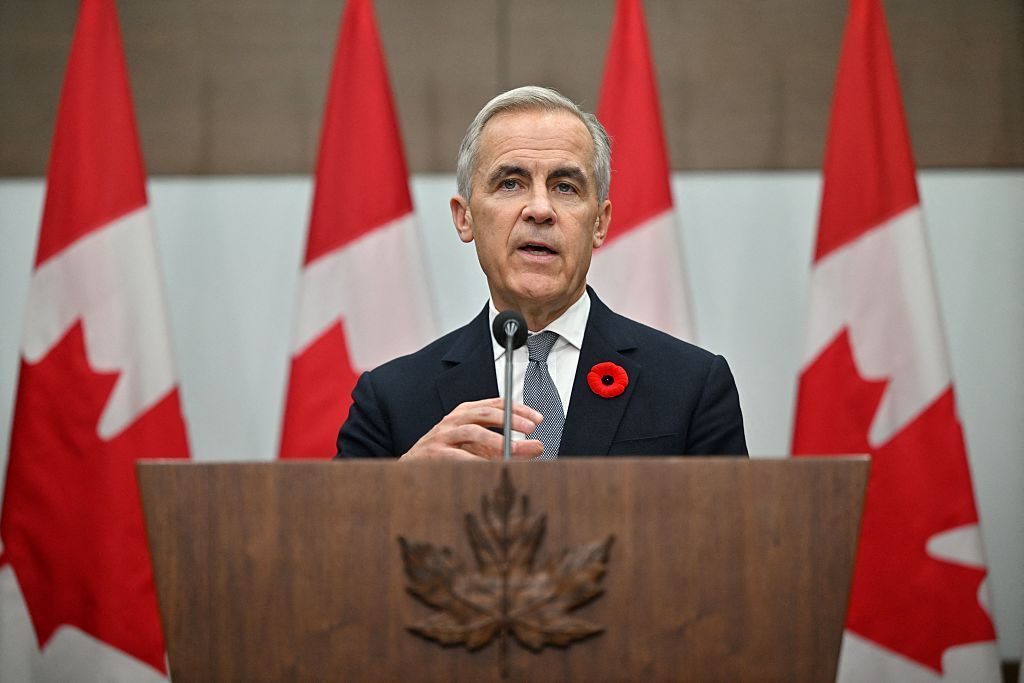Suspense is high in Ottawa as Canadian Prime Minister Mark Carney steers his first budget through to passage. A masterpiece of centrist triangulation, it promises steep cuts — or “sacrifices” — in spending and government personnel, while simultaneously committing to “generational investments”. It outlines C$141 billion in total spending over five years, offset by $51.2 billion in savings, resulting in a $78 billion deficit.
Canadian news coverage has shifted in recent days from the budget itself to the unfolding drama on the opposition benches. The Conservatives have suffered one defection and one resignation, with rumours of more on the way, meaning the Liberals now only need two more votes to govern as a majority.
Carney’s cause was further aided by a procedural blunder from Tory leader Pierre Poilievre, who declaimed loudly against what he considered an inflationary budget, before forgetting to propose the primary amendment — a privilege of the official opposition. This then allowed the third party, the Bloc Quebecois, to suggest its own change and smoothed the path for its support, along with that of the New Democrats. Talk of a motion of no confidence and a return to the polls six months after the last election has since abated as the Liberals appear likely to survive the first two of three budget votes. Once again, Carney is evidently lucky in his selection of enemies. But what does the budget itself look to do for Canada?
Buried in the budget’s 400 pages are ideas that sound reasonable on their own — $600 billion for youth employment, $81 billion for the military and $51 billion for infrastructure — but which scarcely cohere into a compelling narrative. That is especially the case since Ottawa has mastered the art of talking about nation-building but has often fallen short in its execution. Perhaps the most interesting aspects of the document, from a political point of view, have to do with what one staffer called “pulling the woke weeds”, or the excising of the distinct policy legacies of the Trudeau years. These include a virtual halving of the number of temporary migrants amid broader immigration cuts, removing the promised carbon emissions cap and capital gains tax increase, and tamping down on “feminist” and “gender-based” analyses.
Yet the Carney budget must ultimately be understood as a band-aid that can only provisionally — if at all — stanch the bleeding caused by a deeper wound: the structural weaknesses embedded in the Canadian economy. Trump’s tariff war is obviously causing the greatest pain, as it revealed the extent to which Canada has depended on a single partner for its prosperity. As a result, the country now teeters on the edge of recession.
Add to this decades of chronic underinvestment by a risk-averse private sector, compounded by excessive regulatory hurdles for building and energy projects. Then consider perhaps Canada’s greatest economic sinkhole: the massive, parasitic real estate sector that diverts trillions into stagnant and unproductive assets (a problem that goes unacknowledged in the budget). Taken together, these factors give a sense of the immensity of the economy’s troubles. The new write-offs for capital investments offered in the budget may help, but likely not at the scale or pace the moment demands.
At this point, a budget can only do so much. The real work of reversing Canada’s malaise is in securing new sources of external and internal capital for resource development and re-industrialisation. But even as Canadians say they want to do all this, they remain fixated on getting back to the pre-Trump, Nafta-era status quo, as demonstrated by the Ontario government’s anti-tariff ad. Carney was hailed as the leader who might reverse this faltering trajectory — a kind of Canadian Franklin D. Roosevelt. Yet at the moment, he more closely resembles Canada’s Herbert Hoover: the most competent face of the old order.

